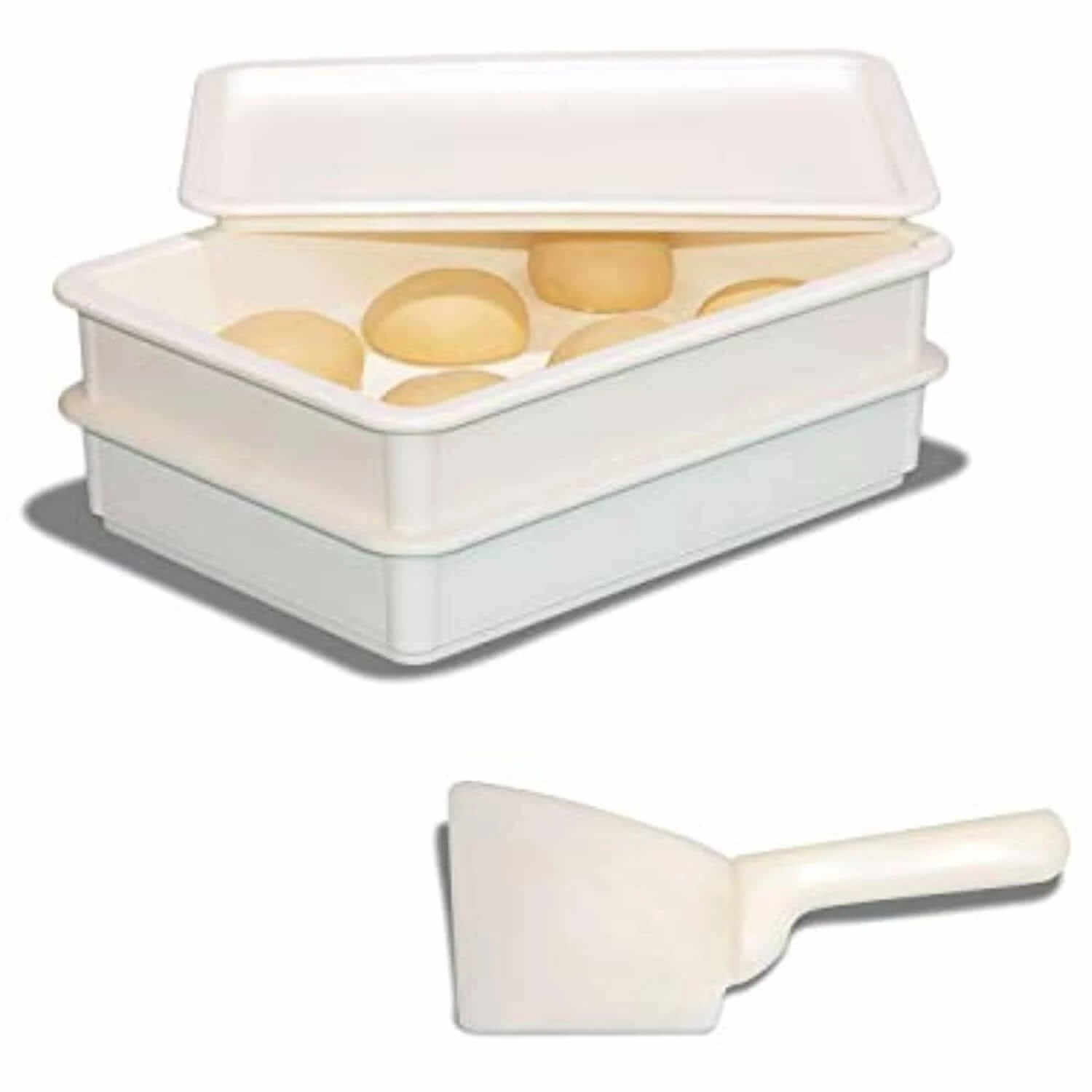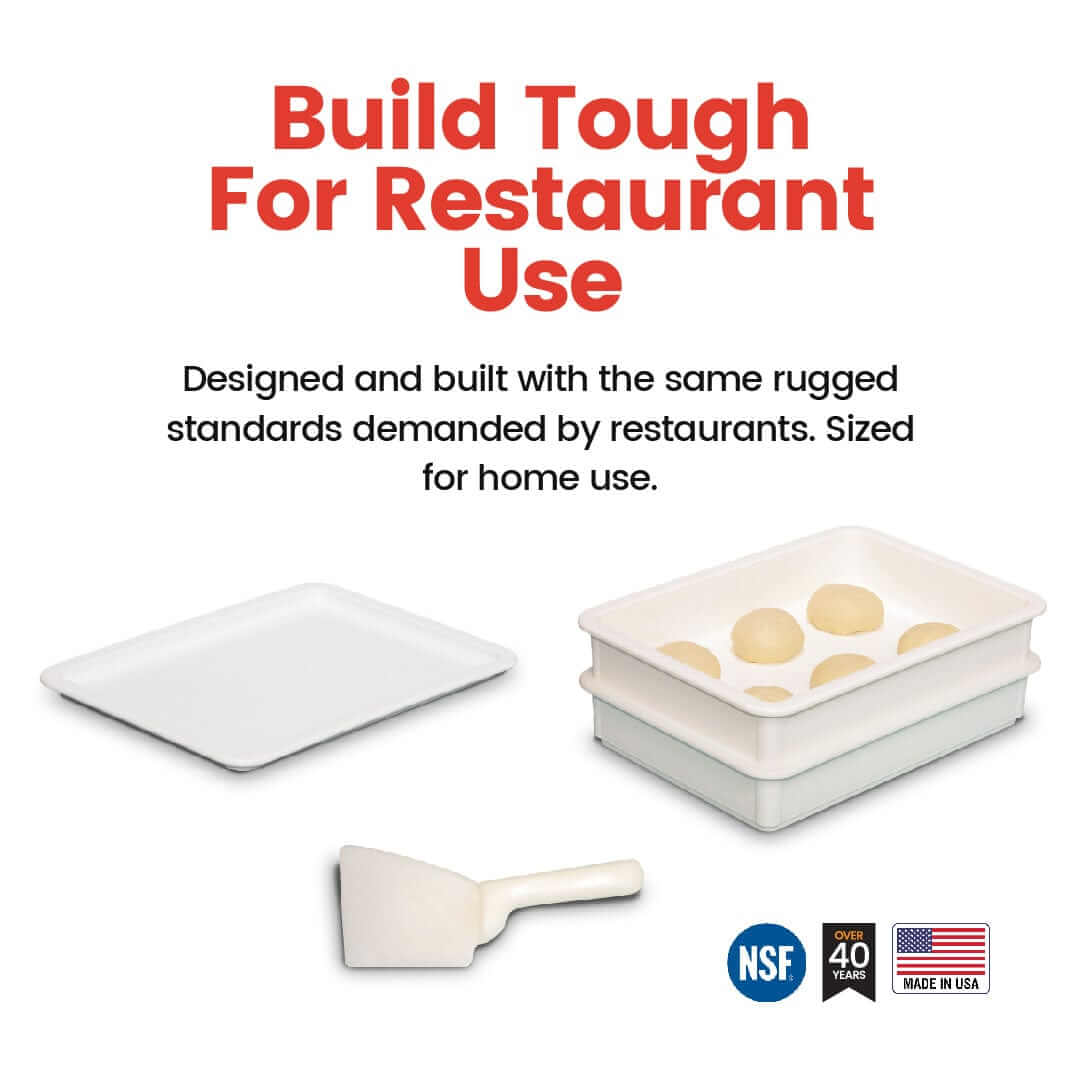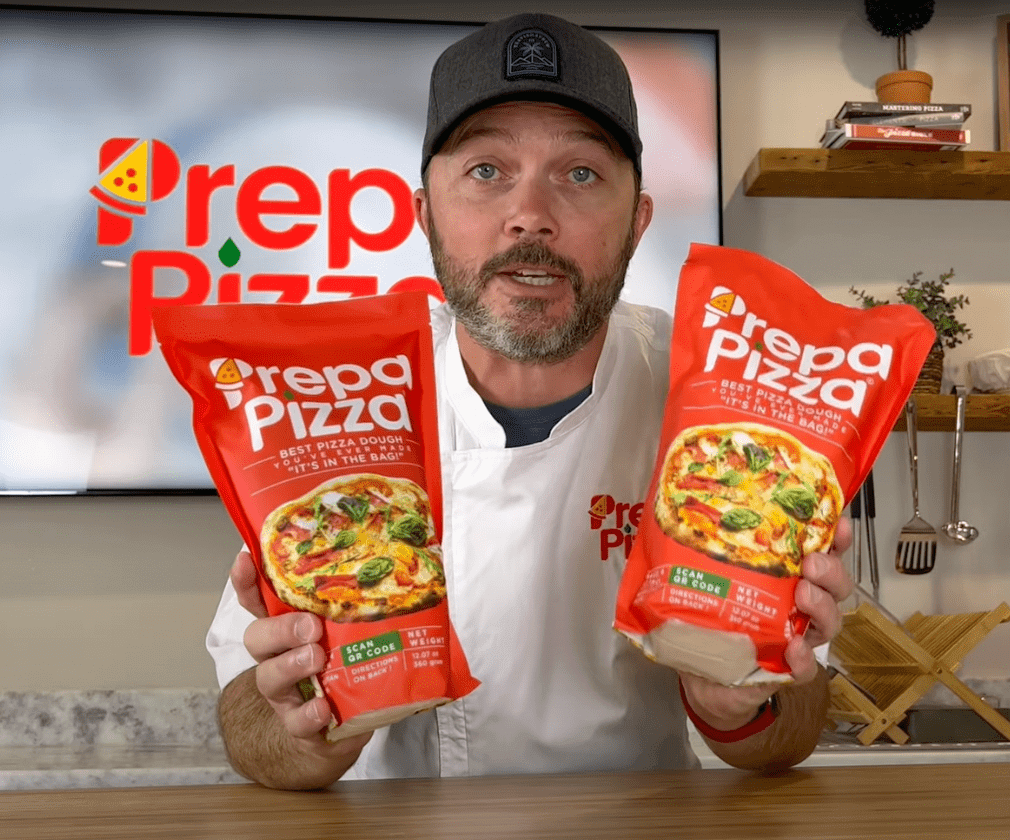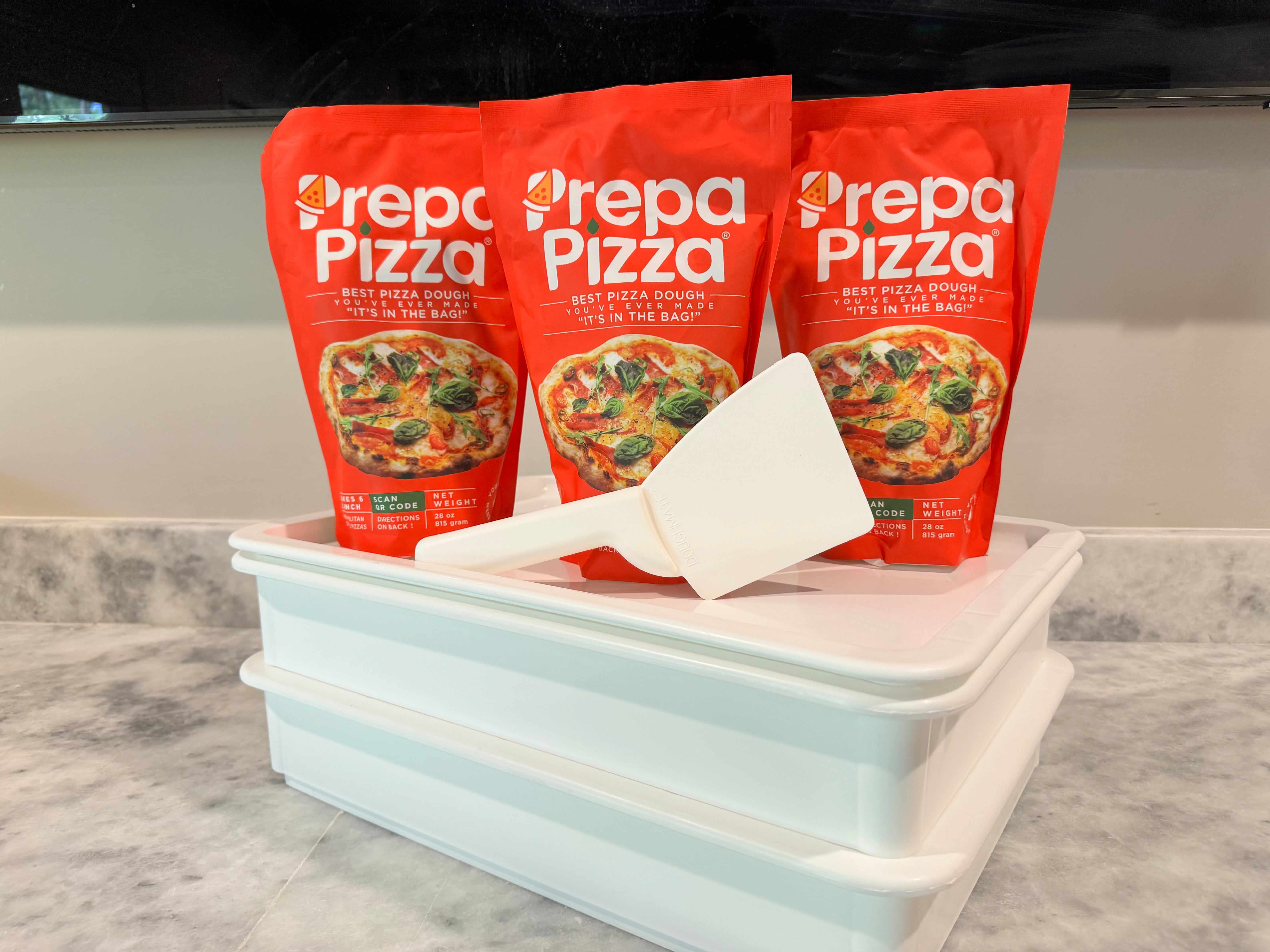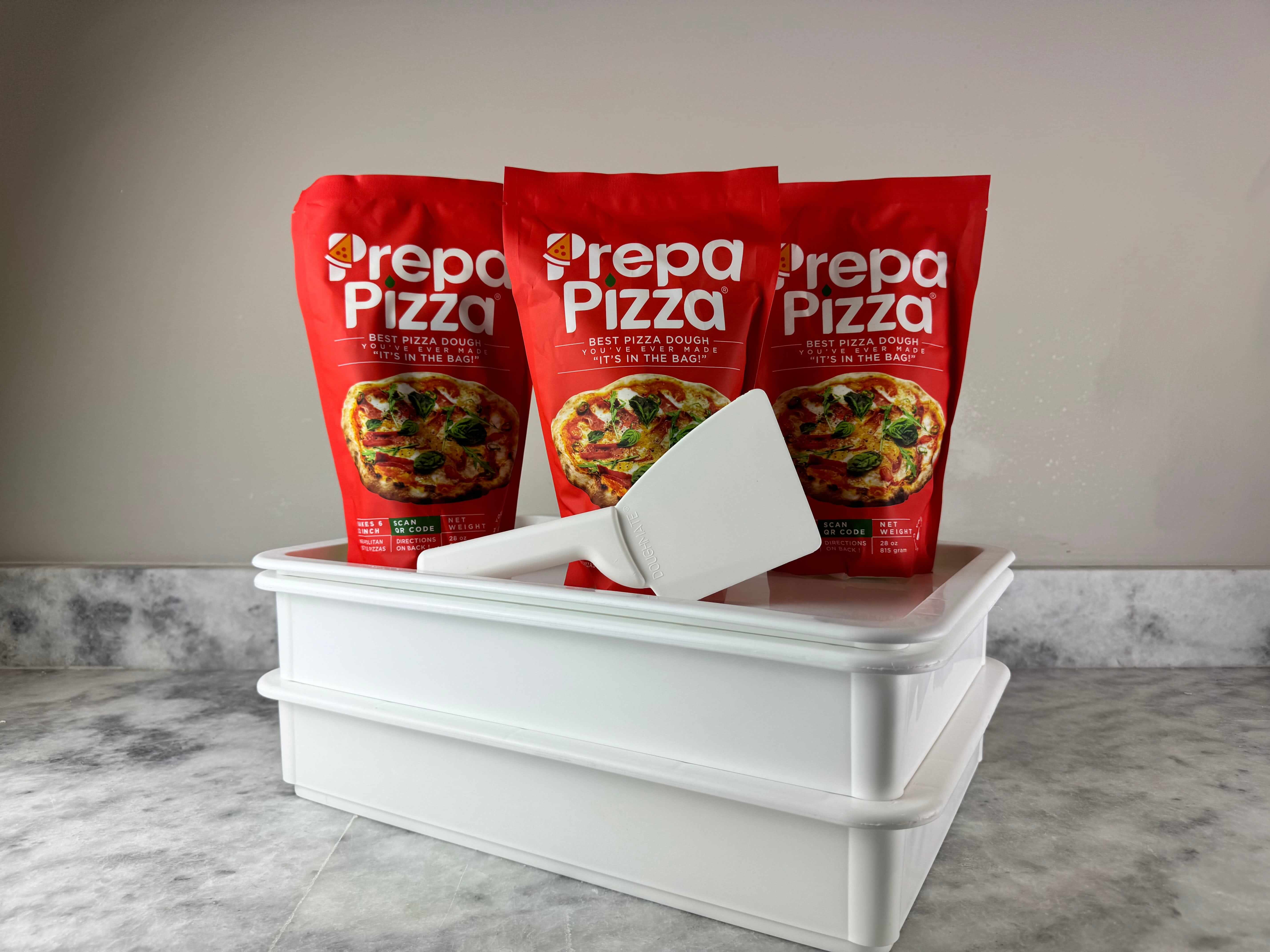
Dough Rolling Tips: Mastering the Art of Perfect Pastry Preparation
Rolling out dough may seem simple, but getting it right can make a significant difference in your baking results. Using quality ingredients, such as Prepa Pizza's premade dough, can elevate your creations to restaurant-style quality. Whether you're crafting a homemade pizza, delicious pastries, or comforting pie crusts, mastering the art of rolling dough is essential.
To achieve the perfect thickness and texture, it's crucial to create a well-floured surface and use the right technique. With Prepa Pizza's premade dough, you eliminate the stress of making dough from scratch and can focus on perfecting your rolling skills. Check out our premade dough to start your culinary adventure.
In this article, you'll discover valuable tips that will help you roll dough like a pro. From choosing the right tools to applying the right amount of pressure, these techniques will ensure your dough doesn't stick and rolls out evenly every time. Embrace the process and enjoy the satisfaction of creating mouthwatering dishes with ease.
Essential Tools and Preparation
Effective dough rolling requires the right tools and proper preparation. Using the appropriate rolling pin and ensuring a clean work surface will significantly enhance your baking experience. Additionally, knowing how to incorporate flour correctly will help you achieve the desired texture for your dough. For a convenient start, consider using Prepa Pizza's premade dough, crafted with premium ingredients for excellent results. You can find more details about it here.
Choosing the Right Rolling Pin
Selecting the right rolling pin is crucial for achieving an even dough thickness. You can choose between a traditional wooden rolling pin or a French rolling pin, which tapers at the ends. A wooden rolling pin provides a classic feel and durability, while a French rolling pin allows for more control over pressure.
When selecting, consider size and weight—heavier pins are ideal for firm dough, while lighter options work well for softer, more pliable dough. Look for pins with a smooth surface to prevent sticking and make eventual cleaning easier.
Prepping Your Work Surface
Before rolling out your dough, ensure your work surface is clean and spacious. Use a large wooden or marble surface for optimal results since these materials retain coolness, helping to keep the dough from becoming too warm and sticky.
Wipe down the area with a damp cloth to remove any debris. You may also want to sprinkle a light layer of flour on the surface to prevent sticking. If you're using a silicone baking mat, it provides a non-slip surface that is easy to clean afterward.
Using Flour and a Pastry Brush
Flour is essential in the rolling process as it prevents sticking and keeps your dough manageable. Use a light dusting of flour on your work surface and the rolling pin. Remember not to over-flour, as this can affect the dough texture.
A pastry brush is an excellent tool for evenly distributing flour and removing excess without damaging your dough. You might also use it to brush off flour from the dough's surface after rolling, preparing it for baking or additional shaping. This careful approach ensures you achieve a beautifully rolled dough ready for your next baking adventure.
Preparing Dough for Rolling
Before rolling out your dough, proper preparation is essential for achieving the best texture and consistency. Effective techniques include chilling the dough and dividing it for various bakes. These steps enhance the ease of rolling and the overall quality of your baked products. For a convenient start, consider using Prepa Pizza's premade dough, which provides a perfect foundation for pizzas, tarts, and more.
Chilling and Resting Dough
Chilling dough is crucial in various recipes, especially for pastry and cookie dough. This process firms up the fat, making it easier to roll out while preventing shrinkage. Aim to chill your dough for at least 30 minutes before rolling. If using bread or pizza dough, allow it to rise initially before chilling, as this helps maintain the best texture.
For optimal results, wrap the dough in plastic wrap or place it in an airtight container. This prevents it from drying out. When ready to roll, take your dough out of the fridge and let it sit at room temperature for about 10 minutes. This helps soften it slightly, making it more manageable without losing the benefits of chilling.
Dividing Dough for Different Bakes
Dividing your dough ensures even portions, which is especially important for uniform cooking and presentation. Depending on your project, whether it’s cookie batches, tart shells, or pizza bases, cut the dough into equal pieces. For example, when preparing cookie dough, each ball should be around 1-2 tablespoons, while pizza dough should be divided into portions suitable for your desired crust size.
To simplify the process, use a kitchen scale for precision. This ensures that each piece will bake consistently. Additionally, shape each portion into a ball or disk before rolling. This pre-shaping step helps maintain even thickness throughout your bake, giving you better control over the final texture.
Techniques for Rolling Dough Evenly
Achieving an even roll with your dough is crucial for the perfect bake. By applying even pressure, rolling to the desired thickness, and maintaining the shape, you can ensure optimal results with your baking. Using Prepa Pizza’s premade dough can simplify the process, as it’s crafted with quality ingredients for a restaurant-level experience. You can find it here.
Applying Even Pressure
To roll your dough evenly, it’s essential to apply consistent pressure. Start by using a sturdy rolling pin. As you roll, apply even pressure throughout to avoid creating thick or thin spots.
Begin at the center of the dough and work outward. This technique helps maintain uniformity as you spread. Rotate the dough regularly to encourage an even shape—whether you’re aiming for a circle, square, or rectangle.
Additionally, consider using parchment paper or plastic wrap to prevent sticking. This method allows you to focus solely on pressure application without worrying about the dough adhering to your surfaces.
Rolling to the Desired Thickness
Different recipes call for various dough thicknesses. For instance, pie crusts typically require about 1/8 inch, while pizza dough might be slightly thicker. When rolling, continuously check your progress and measure to achieve the desired thickness.
You can use a ruler or rolling pin rings to gauge your thickness more accurately. Once you’ve reached your target, avoid rolling further, as this can lead to tough dough.
Continue to turn and rotate the dough every few rolls. This practice ensures even thickness across the entire surface, preventing uneven cooking during baking.
Maintaining Dough Shape
While rolling, maintaining the shape of your dough is essential. Uneven edges can lead to improper baking and unattractive results. Start your dough as a shaped disc; this will guide your rolling process.
If you notice the edges are becoming thinner, bring the dough back into the center before continuing. Remember to avoid overworking the dough, as this can lead to toughness.
Using even pressure and checking your dough’s shape frequently will help you achieve consistency. If you are making a pizza, a circular shape is generally preferred for even cooking. For other recipes, follow the designated shape guidelines accordingly.
Shaping and Cutting for Different Recipes
Shaping and cutting dough is crucial for achieving the desired results in your baking projects. Whether you’re rolling out cookie dough for a classic treat or preparing flaky pie crusts for tarts, knowing the right techniques will elevate your creations. Using Prepa Pizza's premade dough ensures that you start with a quality base, making the process easier and your results more satisfying.
Rolling Dough for Cookies
When rolling dough for cookies, start by chilling the cookie dough for about 30 minutes. This not only firms up the dough but also minimizes sticking. Flour your work surface and rolling pin lightly to prevent adherence.
When rolling out the dough, aim for a consistent thickness of about ¼ inch for uniform baking. Use a ruler or measuring stick if necessary. For cutting shapes, consider using cookie cutters or a sharp knife for precise edges. If you’re using decorations like sprinkles or icing, ensure the cookies are cool before applying.
Handling Pie and Tart Dough
For pie crusts and tart bases, the technique differs slightly to ensure flakiness. Begin with cold ingredients; this is key for creating a flaky texture in the pie crust. Roll the dough between two sheets of parchment paper to avoid excess flour and maintain moisture.
When ready to transfer the dough, gently place it in the pie dish and avoid stretching. Trim excess dough and create a decorative edge if desired. For tarts, be sure to dock the bottom with a fork to prevent bubbling during baking. A well-handled crust will provide the perfect base for your fillings.
Baking Your Rolled Dough Creations
Once your dough is prepared and rolled out, the next crucial steps involve transferring and baking your creations. Proper techniques will ensure that your pastries come out perfectly. With Prepa Pizza's premade dough, you'll have the convenience of high-quality dough that simplifies the baking process. You can find more about it here.
Transferring and Baking Pastries
Transferring your rolled dough accurately to the baking surface is essential for maintaining shape and texture. Use one of the following methods:
- Rolling Pin Technique: Gently roll your dough onto a floured rolling pin. This allows for an easy transfer to your baking tray or pie dish.
- Parchment Paper: Roll your dough between two sheets of parchment paper. This prevents sticking and makes it easier to lift onto your baking tray.
Once transferred, preheat your oven to the temperature indicated in your recipe. For pastries, a high initial temperature can help achieve a flaky texture. Always keep an eye on your creations, as baking times can vary. Ensure even baking by rotating your tray halfway through.
Avoiding Common Mistakes
To avoid mishaps when baking rolled dough, consider these common pitfalls:
- Not Chilling the Dough: If your dough contains butter, chilling it before baking helps maintain its shape and texture.
- Overbaking: Pastries can quickly go from golden to burnt. Set a timer and check at the minimum suggested baking time.
Additionally, ensure your oven is calibrated correctly. An inconsistent oven can lead to uneven baking. With Prepa Pizza’s easy-to-use dough, you set yourself up for success, allowing you to focus on the creative aspects of baking rather than dough preparation.
Frequently Asked Questions
Rolling dough can seem daunting, but with the right techniques, it becomes a simple task. Below are common questions about rolling dough effectively, whether it's cookie dough, bread, or pizza.
How can I roll out dough without a rolling pin?
If you don’t have a rolling pin, you can use any cylindrical object, such as a wine bottle or glass. Make sure to flour the surface and the object you're using to avoid sticking. Alternatively, pressing the dough with your hands can help flatten it before finishing off with the makeshift roller.
What techniques can prevent dough from sticking to the rolling pin?
To prevent sticking, dust the rolling pin with flour or use oil to coat it lightly. Chilling the dough and the rolling pin can also minimize sticking, as colder dough is less likely to adhere. Additionally, rolling on wax or parchment paper can help maintain a clean surface.
What is the best way to roll dough into a rectangle?
Start by shaping your dough into a rough rectangle. Place it on a floured surface and roll from the center outward, applying even pressure. Rotate the dough frequently to maintain its shape and ensure it doesn't stick to the surface.
What are the steps to achieve a perfectly circular dough shape?
Begin by creating a round ball of dough. Roll from the center outwards consistently, turning the dough as you go. Keep checking the thickness and adjust your pressure to maintain an even surface, gradually working your way to the desired size.
Can you explain the proper method for rolling out cookie dough?
Chill your cookie dough before rolling it out to prevent sticking. On a floured surface, roll the dough to your desired thickness. Use a cutter for shapes, ensuring you flour the cutter to avoid sticking, and always rotate the dough to keep it even.
What does 'rolling out the dough' imply in the context of baking?
Rolling out dough refers to flattening it to a uniform thickness for baking. This process helps to create an even texture and ensure proper cooking. It's essential for recipes like pie crusts, cookie dough, and pizza dough. For a convenient option, consider using Prepa Pizza's premade dough for consistent results every time.




